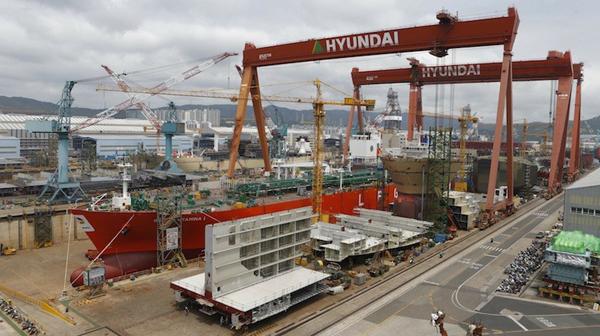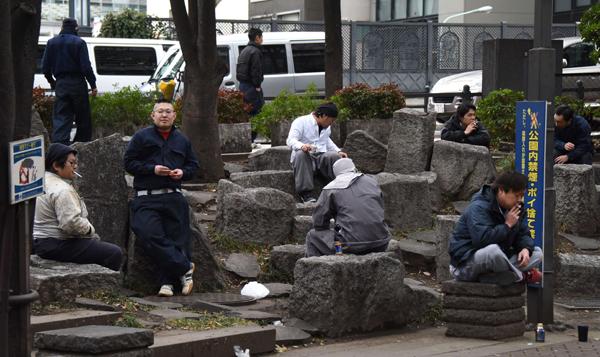You are here
South Korea offers $11 billion in stimulus spending as growth dips
By Reuters - Jul 24,2014 - Last updated at Jul 24,2014
SEOUL — South Korea offered billions of dollars in stimulus spending on Thursday to shore up domestic demand after Asia’s fourth-largest economy grew at its weakest in more than a year in the second quarter.
The finance ministry’s plans included additional spending of 11.7 trillion won ($11.4 billion) from the fiscal and quasi-fiscal accounts, 26 trillion won of loans or other financial support and easing in mortgage borrowing restrictions.
The central bank separately unveiled a plan to create a 3 trillion won lending facility, based on which banks can lend up to 12 trillion won with low interest rates to support corporate investment in production facilities within the country.
President Park Geun-hye has called for all-out efforts to boost the economy and Finance Minister Choi Kyung-hwan promised to take massive action, which investors believe will pressure the central bank to cut interest rates as soon as next month.
“The government’s will to improve the economy is quite strong and there is a social understanding right now that the economy has to be supported. I feel that the measures will work,” said Kim Jong-su, economist at Taurus Investment & Securities.
“In the past, the government would focus its strength on one policy or another, but right now it is pulling in everything from all possible points,” he added.
The won fell 0.4 per cent on the day to 1,027.8 per dollar by 0153 GMT as traders slightly increased expectations for an interest rate cut, but bond futures eased as investors opted to take profits after recent rallies.
South Korea, which relies heavily on exports, has been dragged down by a slower-than-expected recovery in global demand, while domestic consumption has been fragile, partly as a result of the ferry sinking that hurt tourism and services.
South Korea’s economy grew 0.6 per cent in the April-June period over the prior quarter, data showed earlier on Thursday, the weakest since the first quarter of 2013 and slightly below market expectations for 0.7 per cent growth.
Rate cut looms
The Bank of Korea data showed private consumption fell a seasonally adjusted 0.3 per cent in the second quarter after edging up 0.2 per cent in the January-March period. Capital investment rose 1.3 per cent after a 1.9 per cent decline.
It was the worst fall in private consumption since the third quarter of 2011 and only the second quarterly loss since then.
The Sewol ferry sank on April 16, killing more than 300 people in the country’s worst maritime accident in two decades. That led to massive cancellations of tour contracts across the country, badly affecting all businesses serving tourists.
“In the domestic tourism industry, how the public sector entities are doing is very important,” said Nickey Joo, who runs Air Tours Co. “All public-sector travelling was cancelled immediately after the accident and that quickly stopped activity in the private sector as well.”
Private consumption generates about half of South Korea’s gross domestic product (GDP) but the economy still relies heavily on exporters as their performance has a strong influence on jobs and investment within the country.
The won has also emerged as an important factor for the Bank of Korea’s policy as a firmer won cuts profits at exporters and lowers inflation. The won was up 12.9 per cent against the dollar by the end of June from a year earlier.
South Korea’s SK Hynix Inc., the world’s second-largest memory chip maker, reported on Thursday a 2.7 per cent drop in its second-quarter operating profit over a year before as the firmer won ate into profits earned on overseas sales.
Unusually low inflation also underscores the currency effects and depressed consumer demand. Annual inflation averaged 1.4 per cent for the first six months, below the lower end of the central bank’s target band of 2.5 - 3.5 per cent.
Low inflation and the government’s call for policy coordination will likely lead to the Bank of Korea’s interest rate cut as soon as at its August 14 meeting. It would mark the first rate cut since May last year, when the central bank also lowered interest rates to support the government’s stimulus efforts.
From a year earlier, South Korea’s GDP rose 3.6 per cent for the June quarter, matching a median 3.6 per cent gain forecast in the Reuters survey but slowing from a 3.9 per cent rise in the first quarter.
The Bank of Korea downgraded its economic growth forecast for the whole of this year to 3.8 per cent from the previous 4 per cent, with many analysts seeing the projection as still too optimistic. The economy expanded 3 per cent in 2013.
Related Articles
SEOUL — South Korea vowed Tuesday to restructure the country's once formidable shipbuilding and shipping sectors, now crippled by mismanagem
ISTANBUL — Turkish economic growth slowed to 5.2 per cent year-on-year in the second quarter, data showed on Monday, in what officials descr
TOKYO — Japan's economy shrank more than expected in the final quarter of last year as consumer spending and exports slumped, adding to head



















